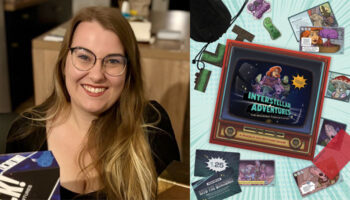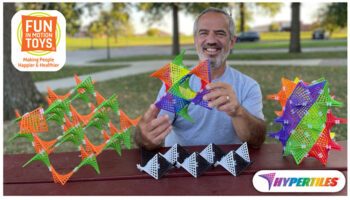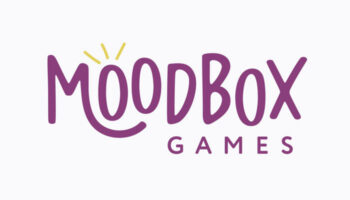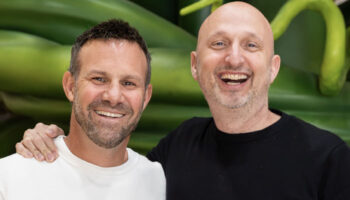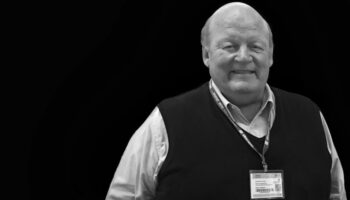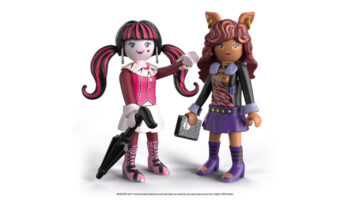Helvetiq’s Hadi Barkat on creativity, style – and why he licensed Bandido on the spot
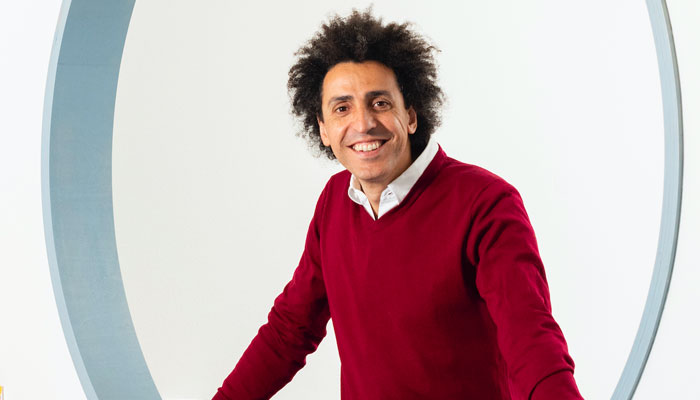
Hadi, it’s great to catch up. To kick us off, what was your route into the games industry?
I had an accidental arrival into games… It was actually a citizenship procedure that inspired our very first game! I took the citizenship test to become Swiss and my Swiss friends were very curious about the process. I wondered how I could share it with them – I thought about writing a book, but I wanted it to be social so I turned it into a board game called HELVETIQ.
It’s two games in one. One is a political game where you’re a regular citizen trying to rise to the top of the executive branch at a federal level in Switzerland. The other side is more of a trivia quiz that invites you to learn about the country in a fun way.

But HELVETIQ wasn’t launched with a company in mind?
No, it was a hobby project. I sold it to stores myself because I didn’t have time to try and convince a publisher to sign it. The first print run of 3,000 copies in tiny French-speaking Switzerland sold out in three weeks. It was a surprise – I always imagined I’d print 3,000 copies and forever have copies of the game in my living room! That was 15 years ago and it marked the beginning of my adventure in board games. Then in 2010, I decided to go and do it full time and in 2014 we started publishing games outside of Switzerland.
And did the game do the job? Are you now a Swiss citizen?
It did! I am!
A good advert for the game! After HELVETIQ, what were the first games you published as a company?
It was our Matchbox line – games with sticks that each boast different mechanics. One was from Reiner Knizia and there were two or three from Martin Nedergaard Andersen. We went to Nuremberg, showed people and then we had orders. It’s been a bit of an accidental business! There’s been a lot of passion and enthusiasm involved, but no absolute business plan or anything.

How did you decide on the types of game that Helvetiq would publish?
Well, I’m your textbook casual gamer. When I started developing the HELVETIQ game, I started playing more games and I thought I understood what got people into games – because there is a journey, right? You can’t push a non-gamer into a really complex game straight away, no matter how good or polished it is. You’ll lose them. So we decided to make what we understood best – casual games with a minimalist design.
For any inventors reading, what sort of games are you interested in seeing at the moment?
We have four collections and if you bring us a game that fits into one of those ranges, we’ll listen, for sure. At the same time, we’re still a young and nimble company so we’re open to bright ideas – even if they’re outside our lines. We look to publish two games each year that fit into this space. A recent example is Toko Island from Wilfried and Marie Fort. It was hard to produce but it’s really special. These are games that we’re enamoured with, even if they don’t fit into one of our lines.

You mentioned you have four collections. Can we dig into those lines?
Yes! So one is the Pocket line – it’s our most famous line. It includes multi-generational games like Bandido, which is our bestseller, as well as titles like Kariba and Mada. Bubbly is the latest one and each year we publish two games for our Pocket line.

Then there’s our line of After Dinner games. This includes titles like Omerta, Kompromat and Art Robbery. They have the same spirit as our Pocket line, but aimed more at adults. The themes are more adult and there’s a lot of interaction in these games.

We also have a line of wooden games called Play with Wood. This includes Oh My Ring and K3; abstract strategy games with modern game rules. We call them Wooden Games 2.0. It’s not those kinds of abstract games where whoever makes the first mistake loses the game.

Our latest line is called Fun by Nature. These are eco-produced games that are 100% sustainable with nature themes, from award-winning designers. Our latest game in that line is called Happy Bee from Théo Rivière and Maxime Rambourg.

One more thing to add is that we’re currently working on a new line of party games. It’s a big development for us and will launch properly next year.
You mentioned that Bandido – designed by Martin Nedergaard Andersen – is your bestselling game. Why do you think it’s taken off in the way that it has?
Well, I signed it on the spot. I thought it was perfect and thankfully my intuition was right! It was the first game that I managed to get my daughters – aged two and four at the time – to play together. That showed it would resonate with kids, but I did not imagine it would go down well with hardcore gamers – but it has!
In terms of why it’s successful… It has two rules, but it’s so hard to win! It’s co-operative, portable and suits all types of gamers. It’s been a real word-of-mouth hit.

Bandido – and all of your games – have a really striking look. Why opt for that minimalist design?
I love design and when I’d visit game stores, a lot of the games looked very cluttered. I knew that if I took a game that looked like that out for my friends, that style would put them off. I love complex games but I wanted to bring people into gaming – or back into gaming.
Does that also drive the themes you choose?
Absolutely. We want themes that are fresh. We probably take more risks than other companies when it comes to themes. For instance, one of our upcoming games is called On the Road. It follows a band that’s touring the countryside playing small stages, gathering fans and trying to make it to the big stage. You don’t see a theme like that very often.

What that always the theme?
No. The prototype was called Your Majesty and it was centred around kings and queens! It worked well and made sense, but there are lots of games with this theme, so we wanted to try something else. I hope people like it – it’s risky!
You mentioned earlier about your eco-friendly Fun by Nature range. Did this take a lot of time and effort to get right?
Well, we also publish books and some of our favourite projects in that side of the business have been books about nature, like Arborama and Ornithorama. We just published Insectorama, so we have an affinity for nature themes. That made it easier to go for it on the games side.
We published three games to start with: Just Wild, Fly Home and Fish ‘n’ Flip. We’re trying to give you a bit more in the box with these games… It’s not just game rules. We also include information about the connected wildlife and also mention NGOs that are involved in the theme. We’re convinced about the mission and want to continue to engage people on nature themes – and make sure they have fun when playing the games!

For any inventors that want to present game concepts to you, what’s the best means of doing so?
We take designer meetings in Cannes, Nuremberg and Essen. Otherwise we can be reached at [email protected].
You’re based in Switzerland. Is there anything about your surroundings that feeds into how you approach game design?
That’s a really good question.
I always include one!
Ha! Well, our team is very multi-lingual – there’s 14 languages spoken. It means we draw on inspirations from everywhere. It’s a mountain country and an outdoorsy country, so don’t be surprised if we publish lots of games about nature. We’re an eco-conscious country so that also shows. Also, we have the Basel School of Design, the historic posters, the grid system… There is a design culture here and we bring some of that into our books and games.
Hadi, before we wrap up, what would you say is your most underrated game?
We’ve certainly published games that we love but no-one else seems to understand. You sometimes forget that you can’t pack yourself into the box… You’re not there to explain the game to people or share your enthusiasm for a game. Even if you had clear rules, some ideas are so counter-intuitive that you still lose people. If I was to pick one, I’d go for Captain Bluff. We published it during the pandemic and it had an airline theme, so that was terrific timing!

I also wish people had more of a desire to play our tactile wooden games. They’re doing really well – K3 has sold around 35,000 copies already – but a lot of people think wooden games are hardcore brainy games. I’d love those people to discover our collection. They’re really rewarding and exciting.
Last question – what fuels your creativity?
Movement. Sports, walking, travelling – that’s when the dots connect in my brain and ideas happen. That said, I can still be creative sat in the office – creativity is everywhere – but in terms of ideas just ‘happening’, that’s triggered by movement.
Hadi, this has been great. A huge thanks again.
–
To stay in the loop with the latest news, interviews and features from the world of toy and game design, sign up to our weekly newsletter here






